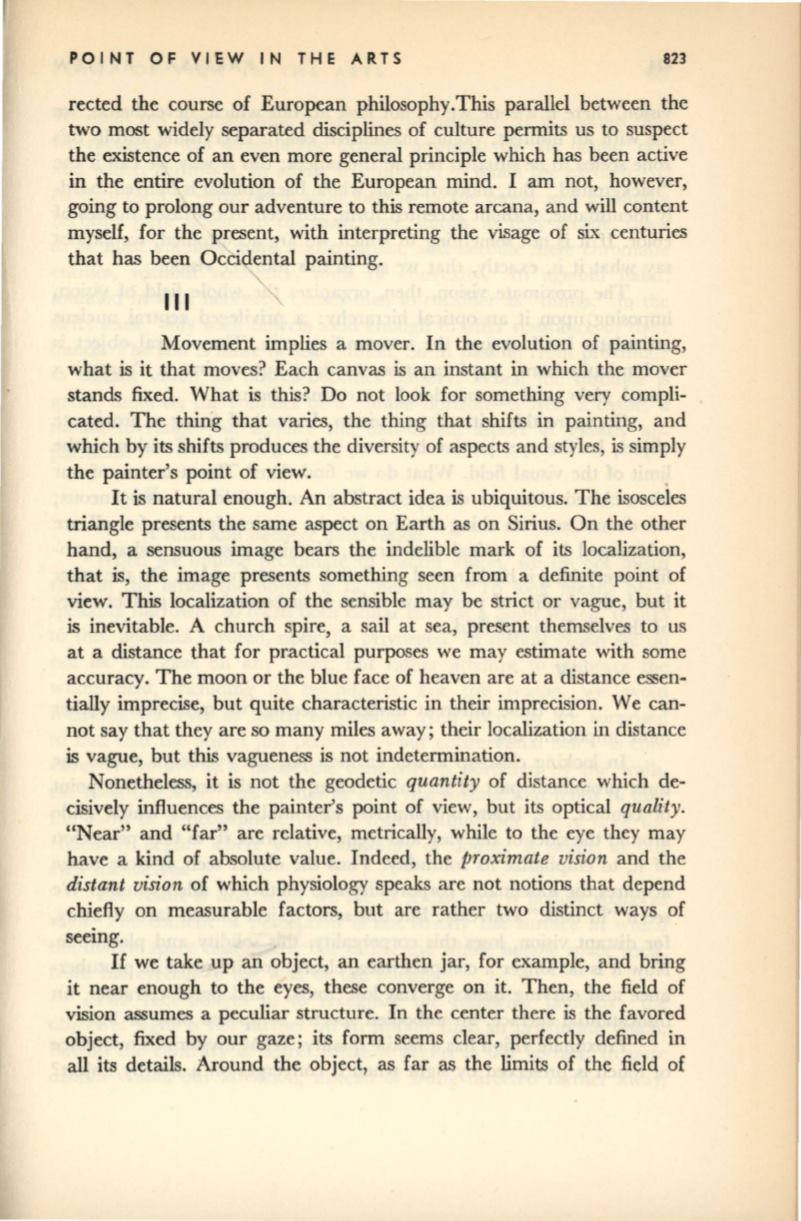
POINT OF VI1:W IN THE ARTS
823
rected the course of European philosophy.This parallel between the
two most widely separated disciplines of culture permits us to suspect
the existence of an even more general principle which has been active
in the entire evolution of the European mind. I am not, however,
going to prolong our adventure to this remote arcana, and will content
myself, for the present, with interpreting the visage of six centuries
that has been Occidental painting.
III
Movement implies a mover. In the evolution of painting,
what is it that moves? Each canvas is an instant in which the mover
stands fixed. What is this? Do not look for something very compli–
cated. The thing that varies, the thing that shifts in painting, and
which by its shifts produces the diversity of aspects and styles, is simply
the painter's point of view.
It is natural enough.
An
abstract idea is ubiquitous. The isosceles
triangle presents the same aspect on Earth as on Sirius. On the other
hand, a sensuous image bears the indelible mark of its localization,
that is, the image presents something seen from a definite point of
view. This localization of the sensible may be strict or vague, but it
is inevitable. A church spire, a sail at sea, present themselves to us
at a distance that for practical purposes we may estimate with some
accuracy. The moon or the blue face of heaven are at a distance essen–
tially imprecise, but quite characteristic in their imprecision. We can–
not say that they are so many miles away; their localization in distance
is vague, but this vagueness is not indetermination.
Nonetheless, it is not the geodetic
quantity
of distance which de–
cisively influences the painter'S point of view, but its optical
quality.
"Near" and "far" are relative, metrically, while to the eye they may
have a kind of absolute value. Indeed, the
proximate vision
and the
distant vision
of which physiology speaks are not notions that depend
chiefly on measurable factors, but are rather two distinct ways of
seeing.
If
we take up an object, an earthen jar, for example, and bring
it near enough to the eyes, these converge on it. Then, the field of
vision assumes a peculiar structure. In the center there is the favored
object, fixed by our gaze; its form seems clear, perfectly defined in
all its details. Around the object, as far as the limits of the field of


